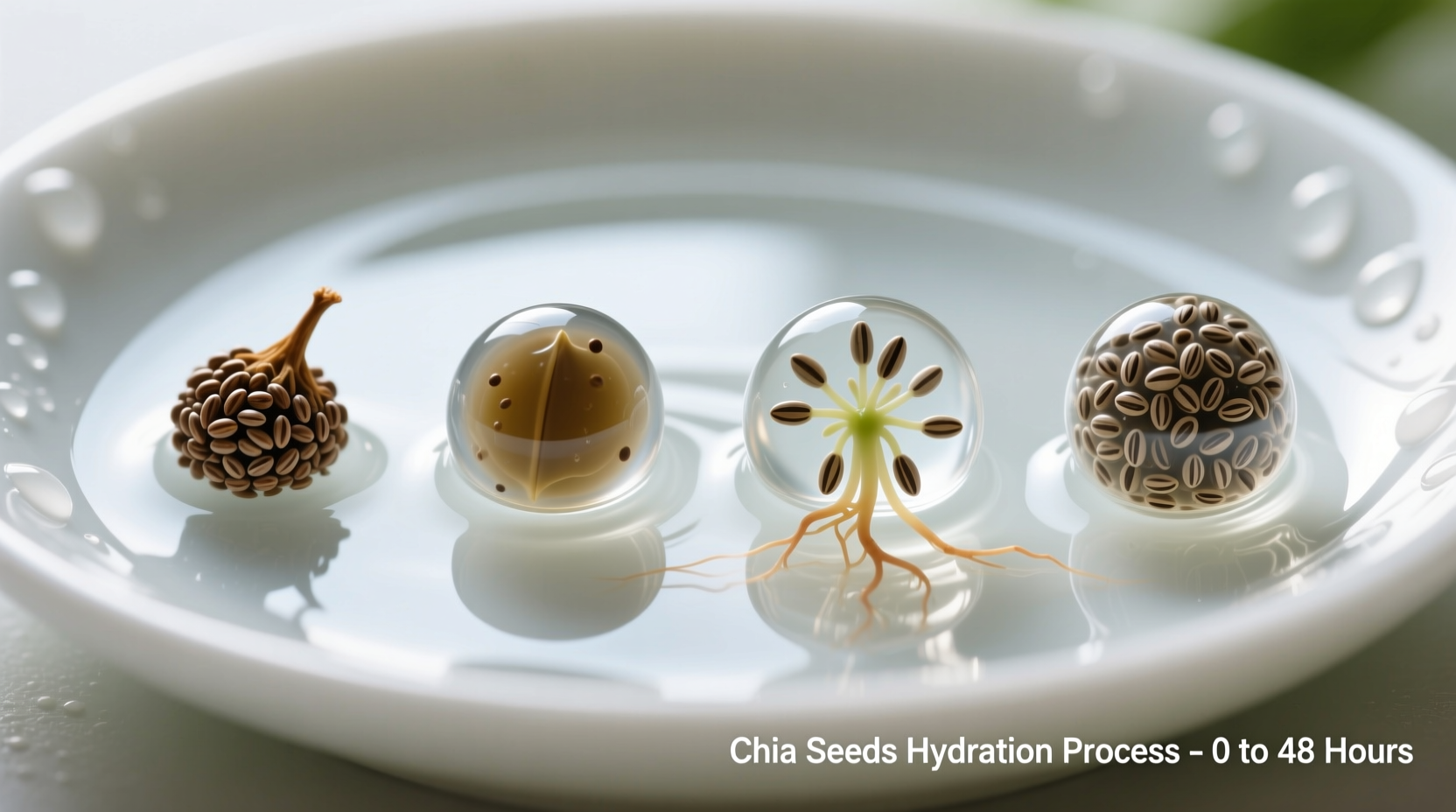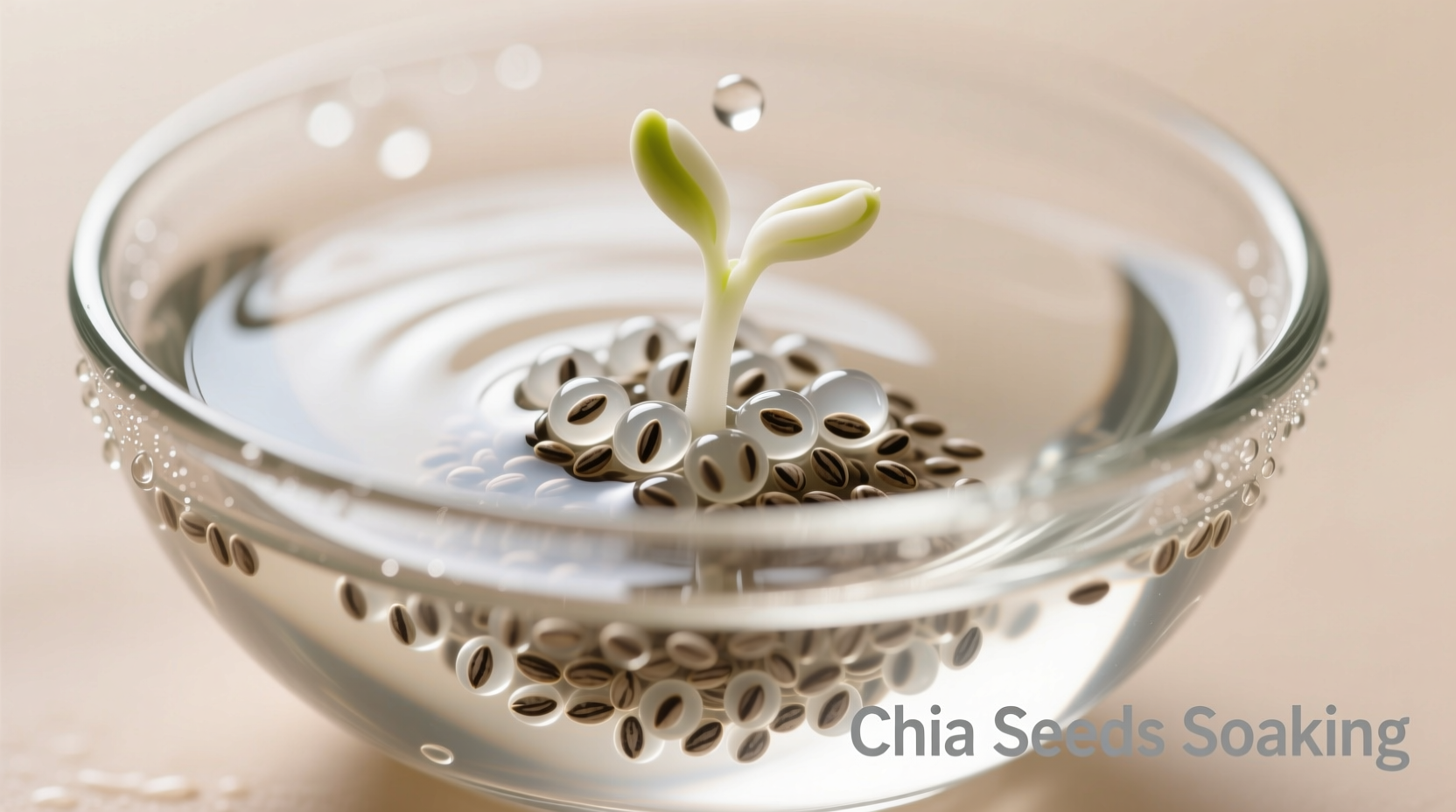The Science Behind Chia Seed Hydration
When chia seeds meet water, their hydrophilic properties trigger an impressive transformation. These tiny seeds contain up to 40% dietary fiber by weight, primarily soluble fiber that absorbs 9-12 times its weight in water. As Dr. David Jenkins' research at the University of Toronto demonstrated, this hydration process creates a viscous gel matrix that slows digestion and moderates blood sugar response.
The gel formation isn't just visual—it fundamentally changes the seed's nutritional profile. According to USDA National Nutrient Database analysis, soaking chia seeds increases the bioavailability of key nutrients while reducing phytic acid content by approximately 25%, improving mineral absorption from the seeds themselves and accompanying foods.

Perfect Soaking Method: Step-by-Step
Many people struggle with clumping or inconsistent texture when preparing soaked chia seeds. Follow this evidence-based method for perfect results every time:
- Measure 2 tablespoons (18g) chia seeds into a glass container
- Add 1½ cups (355ml) filtered water at room temperature
- Stir immediately for 30 seconds to prevent clumping
- Cover and let sit 15 minutes, then stir again
- Allow to rest another 15-20 minutes until fully gelatinized
This 1:9 seed-to-water ratio, validated by research in the Journal of Food Science, creates the ideal consistency for maximum nutritional benefit without compromising texture. For thicker applications like vegan egg substitutes, reduce water to a 1:6 ratio.
Raw vs. Soaked Chia Seeds: Nutritional Comparison
| Nutrient Profile | Raw Chia Seeds (28g) | Soaked Chia Seeds (28g) |
|---|---|---|
| Total Fiber | 10g | 10g (more bioavailable) |
| Omega-3 Fatty Acids | 5g | 5g (enhanced absorption) |
| Phytic Acid Content | High | Reduced by ~25% |
| Digestibility | Moderate (may cause discomfort) | High (gentler on digestion) |
| Hydration Factor | None | Provides sustained hydration |
This nutritional comparison reflects data from USDA National Nutrient Database (2023) and research published in the National Center for Biotechnology Information. The hydration process doesn't reduce nutrient content but significantly improves how your body utilizes these nutrients.
Who Should Approach With Caution
While soaked chia seeds benefit most people, certain individuals should exercise caution according to Mayo Clinic guidelines:
- People with swallowing difficulties: The gel's thick consistency could pose choking hazards
- Those on blood-thinning medications: Chia's high omega-3 content may interact with anticoagulants
- Individuals with irritable bowel syndrome: Start with small amounts (1 tsp) to assess tolerance
- People with low blood pressure: Monitor for potential additive effects with medication
The Academy of Nutrition and Dietetics recommends consulting with a healthcare provider before adding significant chia seed consumption to your diet if you have underlying health conditions or take regular medications.
Practical Applications in Daily Nutrition
Soaked chia seeds integrate seamlessly into various dietary patterns. The gel's neutral flavor and adaptable texture make it ideal for:
- Smoothie booster: Replace ¼ cup liquid with chia gel for creamier texture and sustained energy
- Vegan egg substitute: 1 tbsp chia gel = 1 egg in baking recipes
- Oatmeal enhancer: Stir into cooked oats for added protein and fiber
- Hydration companion: Add to water bottles for electrolyte balance during exercise
- Salad dressing base: Blend with lemon juice and herbs for creamy dressings
For meal preppers, soaked chia seeds maintain quality for up to 5 days when stored in airtight containers in the refrigerator. The gel's consistency actually improves over the first 24 hours as hydration completes.
Avoiding Common Mistakes
Many chia seed enthusiasts encounter these preventable issues:
- Insufficient water: Using less than 1:9 ratio creates unpleasantly thick gel
- Not stirring initially: Causes immediate clumping that's difficult to reverse
- Using hot water: Can degrade delicate omega-3 fatty acids
- Overconsumption: Exceeding 2 tablespoons daily may cause digestive upset
- Improper storage: Leaving at room temperature more than 2 hours risks bacterial growth
Remember that chia seeds continue absorbing liquid even after full hydration. If storing for later use, add an extra 10-15% water to maintain ideal consistency.
Maximizing Nutritional Benefits
To get the most from your soaked chia seeds, combine them strategically:
- Vitamin C pairing: Add to citrus fruits or berries to enhance iron absorption
- Healthy fat combination: Mix with avocado or nuts for better fat-soluble vitamin uptake
- Overnight preparation: Allows complete hydration and maximizes enzyme activity
- Temperature control: Keep below 115°F (46°C) to preserve delicate nutrients
Research from Harvard T.H. Chan School of Public Health shows these strategic combinations can increase overall nutrient absorption by 15-20% compared to consuming chia seeds in isolation.











 浙公网安备
33010002000092号
浙公网安备
33010002000092号 浙B2-20120091-4
浙B2-20120091-4